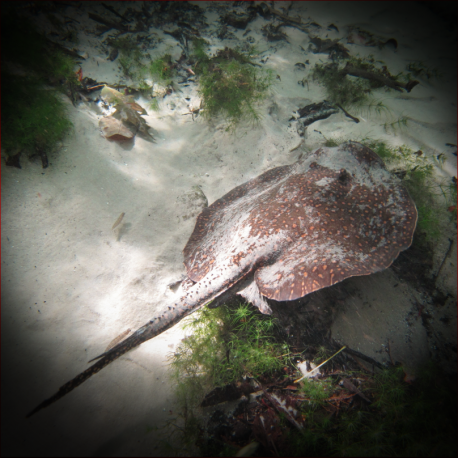More info
Datasheet
| Minimum Tank Size | 900 litres / 237.75 US gallons |
| Maximum Size | 47.8cm / 18.82inches |
| Temperature | 24°C / 75.20°F - 29°C / 84.20°F |
| Hardness | 0-10ºdH |
| pH | 6.0-7.0 |
General Description
Potamotrygon Falkneri, also known as the Large Spot Stingray or P53, is a visually striking species of Potamotrygonid ray native to the Rio Paraná and Rio Paraguay basins in Brazil, Paraguay, and Argentina. It is identified by its exquisite markings and belongs to the family Potamotrygonidae, which consists mostly of freshwater stingrays. Rays are unique among fish as they lack bones, with their skeletal structure primarily composed of cartilage. Their specialized breathing mechanism allows them to breathe effectively while resting on substrates.
Aquarium Setup
When setting up an aquarium for Potamotrygon Falkneri, it is essential to provide ample open swimming space, secure heavy decor items to prevent moving around, and consider dim lighting preferences. While decor is not necessary, incorporating large chunks of bogwood, beech branches, or smooth rocks can enhance the environment. The substrate choice, such as river sand or gravel, should be carefully selected, with many opting to include substrate to mimic natural habitats. A strong biological filtration system and regular water changes are crucial due to the species' high metabolic rate. A tightly-fitting cover is recommended to prevent potential escapes.
Behaviour
Rays are known as top predators in their ecosystems and prefer a tranquil environment. They do not thrive well with aggressive or territorial tankmates and are unsafe to keep with most species due to their predatory nature. Selecting compatible tankmates, preferably large, peaceful fish that occupy upper tank levels, is crucial for ray companionship. Rays can recognize their owners and become tame, often begging for food. While they may sting if threatened, their demeanor is generally non-aggresive.
Feeding and Diet
Potamotrygon Falkneri primarily feeds on fish, aquatic invertebrates, worms, and crustaceans in the wild. They require feeding at least twice daily, with a diet consisting mainly of meaty foods. Juveniles enjoy live or frozen foods like bloodworms and Artemia, while adults require larger items such as mussels, prawns, and earthworms. Avoid feeding mammal meats or feeder fish, as these can lead to health issues.
Reproduction & Dimorphism
Rays utilize matrotrophic viviparity for reproduction, giving birth to fully-formed live young after a gestation period. Sexual dimorphism is noticeable in rays, with males possessing claspers on their pelvic fins used for insemination. Successful breeding in captivity requires providing proper nutrition, selecting suitable mates, and patience for sexual maturity. Breeding behavior can be aggressive, requiring caution and potential separation if necessary.
Habitat and Distribution
Potamotrygon Falkneri inhabits various freshwater biotopes such as sand banks, shallow rivers, and flooded forest areas in the Rio Paraná and Rio Paraguay basins. Rays can adapt to slow-moving tributaries, muddy or sandy substrates, and habitats with seasonal flooding. Concerns exist about the conservation status of some ray species due to habitat destruction and collection for the aquarium trade, prompting controlled exports from countries like Brazil. Hobbyists are urged to research extensively before acquiring rays and ensure proper care for these long-lived and specialist animals.

